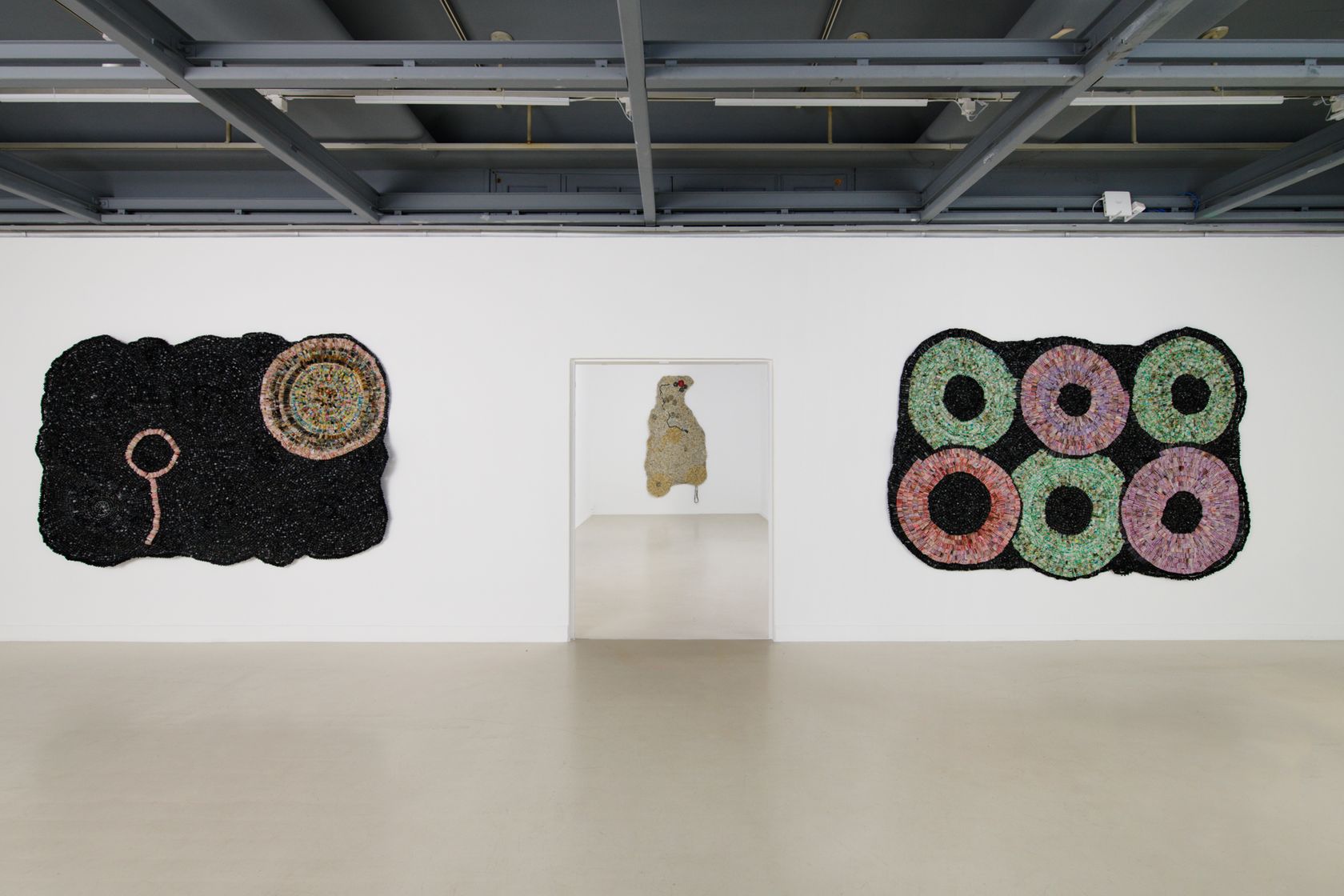-
 1/6
1/6
Moffat Takadiwa , Tales of the Big River
April 4th — June 1st, 2024
Galerie Edouard Manet, Centre d’art contemporain, Gennevilliers (FR) -
 2/6
2/6
Moffat Takadiwa , Tales of the Big River
April 4th — June 1st, 2024
Galerie Edouard Manet, Centre d’art contemporain, Gennevilliers (FR) -
 3/6
3/6
Moffat Takadiwa , Tales of the Big River
April 4th — June 1st, 2024
Galerie Edouard Manet, Centre d’art contemporain, Gennevilliers (FR) -
 4/6
4/6
Moffat Takadiwa , Tales of the Big River
April 4th — June 1st, 2024
Galerie Edouard Manet, Centre d’art contemporain, Gennevilliers (FR) -
 5/6
5/6
Moffat Takadiwa , Tales of the Big River
April 4th — June 1st, 2024
Galerie Edouard Manet, Centre d’art contemporain, Gennevilliers (FR) -
 6/6
6/6
Moffat Takadiwa , Tales of the Big River
April 4th — June 1st, 2024
Galerie Edouard Manet, Centre d’art contemporain, Gennevilliers (FR)
In taking as his starting point the Édouard Manet Gallery’s geographical proximity to the Seine and more specifically to the facilities of the Port of Gennevilliers (France’s largest river port), Moffat Takadiwa invites us through this exhibition to reflect on the relationship between water, the world of industry and the transport of goods.
The impact of activities involved in the manufacture of goods is an ever-present theme in the work of the artist, who employs salvaged materials sourced from landfills around Harare (Zimbabwe). Moffat Takadiwa creates tapestry-like wall sculptures from computer keyboard keys, pens, toothbrush heads and many other tiny components, which can all be identified on closer inspection of the works. Each piece is inspired by a motif or suggestion and addresses themes of relocation: of resources, of language, of raw materials, of customs and points of view.
From its manufacture to its subsequent salvage, its sorting and final assembly into a sculpture, each individual element of a piece represents a journey, and in the same way, the works on show in the exhibition reconstruct a trajectory with its roots in both the past and the present. It is in retracing these journeys that we are able to hear the telling of the Tales of the Big River.
Fixable Mistake welcomes us in the first room of the exhibition, inviting us to embark together on this voyage, laden with all our materialism. Projected into this eclectic composition, we witness the cruise taken by our capitalist world. And since the commercial exchange of goods is a vital component of this voyage, a farmworker’s pay-slip, coins and colonial products accompany us on our journey. Yet in reality, nothing is actually within reach, so we are obliged to retrace every pathway, to relive each mistake, to follow the meanderings of the route once again, in order to finally comprehend the symbolism that surrounds us. Acting as lookouts and guides, Zimbabwe Birds accompany us on our visit. This is not simply anecdotal. As the country’s emblem, appearing on its flag as well as its banknotes, these birds still speak of economic displacement, but a cultural element also comes into play. The Zimbabwe birds also signal an external movement, alluding in muted tones to the plundering of art. Rocked by the same currents as the works, this journey invites us to weave together an intangible perception from the profusion of elements, that of the intersection between the past and the future, which places us squarely in the present. Tales of the Big River transports us from fragments to a whole, through the ebb and flow of water, our industrial activities and our memories.
Yet this story can only be experienced through a subject and we need to ask ourselves what exactly this subject is, particularly when we employ the inclusive we to discuss our commodities and our capitalism.
This question allows us to invoke two narrators: the “we” of the collective of craftsmen working in Moffat Takadiwa’s studio in Mbare, who produced the works in this exhibition, and on the other hand, the “we” corresponding to the Western spectator, faces with his or her relationship to consumerism, which while obviously material in nature, is in this case also cultural.
Through this encounter, Moffat Takadiwa delivers a poetic interpretation of a shared industrial context, perhaps also providing us with the opportunity to embrace this newfound understanding and reconsider its future trajectories.